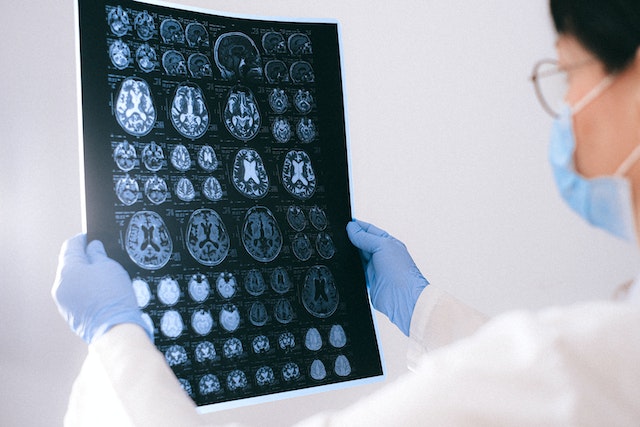Epilepsy is a medical condition characterized by recurring seizures over time, with a higher likelihood of onset in children and seniors. However, there are many people who experience a single seizure in their lifetimes.
Depending on their cause, symptoms, and outcomes, first-time seizures may or may not be an early indicator of epilepsy. For this reason, first-time seizures, especially in adults, are medically significant. Here are eight of the most common causes of first-time seizures.
1. Abnormal Blood Sugar Levels
Abnormal blood sugar levels occur when there is too much or too little glucose in the bloodstream. The body uses glucose as an energy source. When blood sugar is too high, it may interfere with how brain cells communicate with each other. A seizure can occur when neurons become excessively excited.
Elevated blood glucose may also inhibit the production of the important neurotransmitter GABA. Previous research has linked low GABA levels with an increased seizure risk.
On the other hand, very low glucose levels can also trigger a first-time seizure, although this is rare for adults. The risk is higher if blood sugar drops rapidly. This can occur in individuals with diabetes when they inadvertently administer an excessive dose of insulin, or in anyone who restricts their calorie intake. It’s important to note that blood sugar levels can also decrease during sleep.
2. Alcohol Withdrawal
Another common trigger is drug or alcohol withdrawal. Using substances causes the body to form a chemical dependency. In the case of alcohol, the active ingredients bind to GABA receptors and raise the brain’s resistance to seizures. During withdrawal, the brain loses this protection and becomes vastly more vulnerable to seizures.
3. Head Injury
A first-time seizure can also result from a head injury. Damage to the brain can result in a traumatic injury, which changes how the brain functions. Around 10 percent of people with a traumatic brain injury will also experience a seizure within a few days or weeks of the injury. Most of these cases are singular episodes.
4. Poor Sleep Quality
In people with epilepsy, a first-time seizure can be triggered by sleep deprivation. Getting less than the recommended 6 to 8 hours of sleep can lead to sleep deprivation. Conditions like sleep apnea can also prevent deep sleep and contribute to prolonged tiredness.
Researchers are still understanding the link between seizures and sleep. However, studies suggest that poor sleep quality causes an imbalance in neural electrical activity, which increases the chances of a seizure.
5. Certain Prescription Medications
Several prescription drugs can cause seizures. Older antidepressants are the leading cause of first-time seizures. Given the elevated risk associated with these medications, depression and anxiety are typically managed using newer drugs. Also, taking too much of the antihistamine diphenhydramine can cause seizures.
6. Infection in the Nervous System
First-time seizures are sometimes caused by an infection in the nervous system. Viruses like herpes or HIV can spread to the brain and infect neural tissue cells. Severe bacterial infections that spread across the whole body can also contribute to seizures. However, this is not very common.
7. Metabolic Disorder
If a metabolic disorder prevents the body from properly breaking down macronutrients, it can trigger a seizure. Diabetes is the most prevalent metabolic disorder.
People with diabetes cannot break down the insulin hormone. Other metabolic disorders make it difficult for the body to get rid of toxic substances. Over time, this can stress the brain and lead to seizures.
8. Brain Tumor
Seizures may be one of the first indications of a brain tumor. More than two-thirds of people with brain tumors experience epilepsy. Seizures are more likely if the tumor is slow-growing or located in certain brain regions.
How to Manage a First-Time Seizure
Regardless of the underlying cause, observing or personally experiencing a first-time seizure can be a frightening ordeal. Nevertheless, there are steps individuals can take to ensure their safety and that of others in such situations.
Seizures themselves are not inherently dangerous. However, symptoms such as convulsions and loss of motor control can result in serious injury. During a seizure, it is essential for others to ensure a safe environment by removing any potential hazards.
Doctors recommend laying the person on the floor with their head turned to the side. Bystanders should remove any constraints around their necks, such as ties, top shirt buttons, or necklaces.
There are many myths about handling seizures. Bystanders should refrain from holding the person down or trying to put an object in their mouth to bite down on. This only increases the chances of injury.
People having seizures can breathe normally and do not need CPR. Finally, since there is always a risk of another seizure, bystanders should not offer any food or water until the person has returned to their normal state.
It is especially important to time the duration of the seizure. If the episode lasts longer than three minutes or the person doesn’t regain consciousness within 20 minutes, it is a medical emergency. Otherwise, the individual should visit their primary care doctor as soon as possible to get additional testing.
Conclusion
Excluding epilepsy, first-time seizures are symptoms of many distinct disorders. Even if the episode never repeats, it is important for anyone who has experienced a seizure to visit their doctor. Only a professional can determine the source of the seizure and provide proper treatment.

